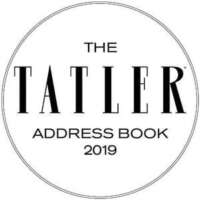Expert Insights
ACT vs SAT: The Differences Explained (Updated for 2025)
Published 22nd August 2025 by Alastair

If you’re aiming for a top US university, one of the first big choices you’ll face is whether to take the SAT or the ACT.
Standardised tests are a cornerstone of US college admissions, crucially assessing students' academic abilities and potential. As students take on higher education at a US College, choosing between the ACT and SAT can significantly influence their application process.
This article will help you make an informed decision by dissecting the critical differences between these two tests. It will also look at their distinct test structures, scoring systems, subject matter coverage, and logistical factors to provide a comprehensive overview.
Let's jump in!
Quick Answer: Both the SAT and ACT are accepted by all US universities. The SAT is more focused on problem-solving in maths and evidence-based reading, while the ACT moves faster and includes a dedicated science section. Students strong in science or who work well under time pressure often prefer the ACT; those who like reasoning problems and a slower pace tend to do better on the SAT.
Let's start with the SAT. The SAT consists of two main sections: Evidence-Based Reading and Writing (EBRW) and Math. The EBRW section includes Reading, Writing, & Language components. The Reading section assesses students' ability to comprehend and analyse texts from various sources, including literature, social studies, and science. It tests skills such as understanding main ideas, making inferences, and interpreting data presented in charts or graphs.
The Writing & Language section focuses on grammar, punctuation, sentence structure, and logical expression within the context of editing and revising written passages.
In terms of scoring, the SAT has a total score range of 400-1600, with the EBRW and Math sections each contributing a maximum of 800 points.
The ACT is structured differently from the SAT. It comprises four main sections: English, Mathematics, Reading, and Science, with an optional Writing section (which some colleges require). The English section evaluates grammar, punctuation, sentence structure, and rhetorical skills, similar to the Writing & Language section of the SAT. It includes passages that test students' ability to revise and edit texts for clarity and coherence.
The ACT has a composite score range of 1-36, averaging scores from all four required sections. Both tests also have optional essay sections, scored separately, that some colleges may require.
| Feature | SAT | ACT |
|---|---|---|
| Total Time | 2 hrs 14 mins | 2 hrs 55 mins |
| Sections | Reading & Writing, Math | English, Math, Reading, Science (+ optional Writing) |
| Scoring | 400–1600 (combined) | 1–36 (composite) |
| Science Section | No | Yes |
| Calculator Use | Yes (entire Math for digital SAT) | Yes (entire Math) |
| Test Style | Reasoning & multi-step problems | Faster pace, straightforward |

Both the ACT and SAT offer multiple test dates throughout the year to accommodate students' schedules. You can find specific test dates and register for exams through the following links:
ACT Test Dates and Registration: ACT Test Dates
SAT Test Dates and Registration: SAT Test Dates
As of 2024, the current test fees are on each official website.
The entire ACT, including the writing test, costs roughly $210, or roughly £160 at the time of writing. There are additional fees for extra services, such as deciding to remove the written test at the last minute, for late registration, for additional score reports, and so on.
Test fees for the SAT start at $24, with extra fees for late registration, changing test centres, and requesting additional score reports.
Fee waivers are available for both tests for students who receive free or reduced-price school lunches, making the tests and score reports free of charge.
If you feel that you are eligible for a waiver, visit the respective pages below:
SAT: The SAT transitioned to a fully digital format in 2024. This shift aims to provide more flexibility and accessibility to students worldwide.
ACT: Currently, the ACT offers paper-based and computer-based testing options. There is ongoing discussion about a potential shift to fully digital testing, although specific plans and timelines have not been finalised yet.

The ACT is scored on a scale from 1 to 36. Each of the four sections (English, Math, Reading, Science) receives a score from 1 to 36. The scores from these sections are averaged to produce a composite score, which is also on a scale of 1 to 36.
The SAT is scored on a scale from 400 to 1600. It consists of two main sections: Evidence-Based Reading and Writing (scored from 200 to 800) and Math (scored from 200 to 800). The total SAT score is the sum of these two section scores.
Colleges often use conversion charts to equate ACT scores to SAT scores and vice versa. These charts facilitate comparisons between the two tests and ensure that students are evaluated fairly regardless of their choice. Understanding these scoring systems and conversions can help students make informed decisions about which test to take and how to interpret their scores in the context of college admissions.
The SAT strongly emphasises algebra, including linear equations, systems of equations, and quadratic equations. It provides a list of key formulas and equations at the beginning of the Math section. Trigonometry is limited on the SAT, appearing more contextualized within geometry questions.
The ACT includes a broader range of math topics, including algebra, geometry, and trigonometry. Unlike the SAT, the ACT does not provide a list of formulas, requiring students to recall and apply them independently. Trigonometry appears more prominently on the ACT, with questions about trigonometric functions, identities, and equations.
Section Structure
SAT
The SAT combines Reading and Writing into a single section called Evidence-Based Reading and Writing (EBRW). This section includes passages that test comprehension, analysis, and grammar skills in an integrated format.
ACT
Meanwhile, the ACT separates these skills into distinct sections:
English: Focuses on grammar, punctuation, sentence structure, and rhetorical skills.
Reading: Tests comprehension, analysis, and interpretation of passages from various subjects.
Optional Writing Section: Requires students to write an essay in response to a prompt, demonstrating their ability to analyse and present their ideas coherently.
Question Types
SAT
Passage-based reading comprehension questions Identifying and correcting grammar and punctuation errors; vocabulary in context; analysis of informational graphics.
ACT
English: Sentence structure and formation; punctuation and grammar rules; rhetorical skills and strategies
Reading: Passage-based comprehension question; understanding of social science, natural sciences, and literary narratives
Optional Writing Section: Essay prompt requiring analysis of a given issue or argument and providing a perspective on it
ACT Science Section:
The ACT Science section assesses students' ability to interpret scientific data and understand experimental setups. It presents passages that include graphs, charts, tables, and conflicting viewpoints related to scientific topics. The section tests skills in analysing trends, making predictions based on data, and understanding experimental methodologies. Importantly, scientific knowledge is not required; familiarity with scientific terminology and the ability to interpret graphical representations are fundamental.
SAT Science Integration:
In contrast to the ACT, the SAT does not have a separate Science section. Instead, it integrates science-like analysis within other sections, such as the Reading and Writing sections. The SAT may include passages that require analytical reading of scientific or technical articles, analysing data presented in graphs or charts, or interpreting information related to scientific topics.
Students who are comfortable with analytical reading and interpreting data presented in various formats may find the SAT's integrated approach appealing. This format allows students to demonstrate their ability to analyse and apply information across different contexts, including scientific content embedded within broader reading passages.
Here’s a structured approach to help students make an informed decision:
Take Practice Tests
Begin by taking one full-length practice test of each exam under timed conditions. This gives you a realistic feel for the format, pacing, and question types.
Compare Scores and Comfort
Review your results. Were you more comfortable with the SAT’s reasoning-based questions or the ACT’s faster pace and science section?
Consider Prep Resources
SAT prep materials are more widely available, but ACT prep resources are also strong and effective. Choose the test where you feel you can prepare best.
Match to Your Strengths
ACT suits students who work quickly, manage time well, and enjoy maths and science.
SAT is a better fit for students strong in critical reading, analysis, and multi-step problem solving.
Think About Test Style & Personal Preference
Some find the ACT’s straightforward questions more intuitive, while others prefer the SAT’s focus on analysis and reasoning.
Get Expert Guidance
A tutor can review your practice results with you, highlight strengths, and recommend the best test for your goals.
Learn more about the SAT and ACT here, or contact us to talk to an expert who can help you make an informed decision.
As you make your decision between the ACT and SAT, it's important to know that both the ACT and SAT are equally valued by colleges and universities across the United States. Your choice between these tests should ultimately reflect your personal strengths, testing style, and the areas where you feel most confident.
At Ivy Education, we offer private tuition services to help you prepare effectively for both the SAT and ACT. Whether you aim to refine your quick problem-solving skills for the ACT or enhance your analytical abilities for the SAT, our expert tutors are here to support you on your journey.
Explore our ACT and SAT tuition services to discover how personalised guidance can help you achieve your best score and reach your academic goals.
Our US Admissions Specialists would be more than happy to help your family with your decision. Contact us today to get in touch with them.
Get in touch 8.0 TopThe ACT emphasises content-based questions and has a Science section, while the SAT focuses on reasoning and includes an optional essay.
Consider your strengths in the subjects tested, your preferred question format, and whether your target colleges have a preference.
There are some advantages to taking both the SAT and ACT if you choose to do so. Some extra-competitive colleges might appreciate seeing both scores. You'll also have more opportunities to get the g rade you are hoping to achieve.
ACT: English, Math, Reading, Science + (optional Essay)
SAT: Evidence-Based Reading and Writing, Math + (optional Essay)
ACT: Each section scored 1-36, averaged for composite.
SAT: Scores range 400-1600, combining Reading/Writing and Math.
Superscoring combines the highest section scores across test dates. Many colleges accept superscores from both tests.
Register online through the official ACT or SAT websites:
ACT Test Dates and Registration
SAT Test Dates and Registration
Most colleges accept both equally; but check specific admissions requirements to see if they have a preference.
Scores are crucial but are one of many factors considered, including GPA, essays, and extracurriculars.
Ivy Education's US Admissions Experts and Consultants can help you with your ACT or SAT admissions tests.
Neither test is “harder” overall, it depends on your strengths. The ACT feels more rushed because there’s less time per question, but the SAT often requires deeper reasoning.
No. Every US university accepts both the SAT and ACT tests equally. Admissions teams care more about your overall academic record and extracurriculars.
Yes, the ACT’s dedicated science section rewards quick data interpretation and scientific reasoning.
Costs vary slightly, but they’re broadly similar. Fee waivers are available for eligible students.
Try one practice test of each. See which feels more comfortable, and then prepare in that direction












